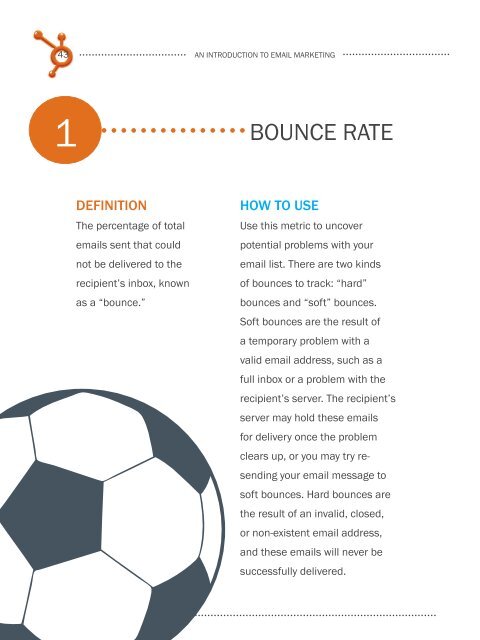An Introduction to How to Execute & measure successful Email ...
An Introduction to How to Execute & measure successful Email ...
An Introduction to How to Execute & measure successful Email ...
Create successful ePaper yourself
Turn your PDF publications into a flip-book with our unique Google optimized e-Paper software.
43<br />
1<br />
Share This Ebook!<br />
www.Hubspot.com<br />
DEFINITION<br />
the percentage of <strong>to</strong>tal<br />
emails sent that could<br />
not be delivered <strong>to</strong> the<br />
recipient’s inbox, known<br />
as a “bounce.”<br />
<strong>An</strong> introduction <strong>to</strong> emAil mArketing<br />
bouNcE rAtE<br />
HOw TO USE<br />
use this metric <strong>to</strong> uncover<br />
potential problems with your<br />
email list. there are two kinds<br />
of bounces <strong>to</strong> track: “hard”<br />
bounces and “soft” bounces.<br />
soft bounces are the result of<br />
a temporary problem with a<br />
valid email address, such as a<br />
full inbox or a problem with the<br />
recipient’s server. the recipient’s<br />
server may hold these emails<br />
for delivery once the problem<br />
clears up, or you may try re-<br />
sending your email message <strong>to</strong><br />
soft bounces. Hard bounces are<br />
the result of an invalid, closed,<br />
or non-existent email address,<br />
and these emails will never be<br />
<strong>successful</strong>ly delivered.

















